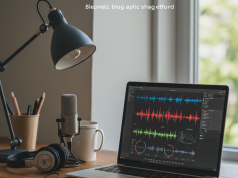Designing a good inbound marketing strategy is like assembling a carefully-tooled machine. Every piece must function in concert with each other to attract, meet, and finally please your audience. Perhaps the most potent weapon in this machine is email marketing. Although often derided as “old hat,” e-mail is still one of the most cost-effective and versatile ways to attract leads to your site; keep them there, being nurtured into loyal customers for years.
What is Email Marketing, and Why Does it Matter?

Email marketing is the act of sending targeted messages to a specific audience. Unlike organic social media or blogging, etc., which are after you and require you to go to them for information, email puts your messages directly into personalized one-on-one contact with the people most interested in your brand. As a result, studies show that email marketing boasts an impressive ROI of $36 for every $1 spent. Learn more about How to Improve Your Inbound Marketing Strategy for Better Results.
But once aligned with inbound thinking, email turns into a superb method for building trust and nurturing relations with your audience. By doing so, it ensures that the right content is sent to the right people at the right time – so more efficient than simply phoning up prospects and seeing who’ll talk back.
How Email Marketing Aligns with the Core of Your Inbound Strategy
Inbound marketing revolves around attracting visitors, converting them into leads, closing sales, and delighting customers. Here’s how email marketing supports each stage of the inbound methodology:
1. Attract Stage
Attracting potential leads to your website is the first step. Though email is not traditionally associated with driving initial traffic, it can serve as an entry point to inbound targeting when leveraging tactics like gated content and social sharing.
2. Convert Stage
The conversion stage is where email marketing shines. Once a visitor provides their email address, you have a direct line to nurture them. Use emails to deliver personalized offers, meet customer needs, and set the stage for product or service recommendations.
3. Close Stage
Emails play a critical role in closing deals. Targeted campaigns can present nurturing sequences tailored to individual prospects’ buying cycles. Automation tools also help time your emails perfectly.
4. Delight Stage
The ultimate goal of inbound marketing is to nurture long-lasting relationships, and email marketing provides the perfect avenue for this. Regularly engaging with customers through helpful and delightful emails builds loyalty that extends long after the transaction.
Strategies to Maximize Email’s Effectiveness in an Inbound Framework

While email integrates into every stage of inbound marketing, leveraging it effectively requires strategy. Here are actionable ways to ensure your emails drive meaningful results:
1. Create Segmented Email Lists
Segmented email lists ensure you deliver content that resonates with specific audience groups. Whether segmented by location, demographics, or behavior, personalization increases engagement.
According to Mailchimp, email campaigns with segmentation achieve a 14% higher open rate and a 101% higher click-through rate than non-segmented campaigns.
2. Offer Valuable and Educational Content
Inbound marketing is all about helping over selling. Use emails to deliver content that addresses your audience’s pain points or educates them on relevant topics.
3. Set Up Automated Campaigns for Consistency
Automation ensures your leads are consistently nurtured without overwhelming your team. Drip email campaigns automatically deliver pre-written messages tailored to a recipient’s actions.
4. Measure and Optimize Campaign Performance
No campaign is perfect from the start. Use analytics to monitor open rates, click-through rates, and conversion metrics, then test different options to optimize your results.
5. Encourage Social Sharing
Email marketing doesn’t exist in a vacuum. Encourage subscribers to share your email content on their social platforms or forward it to friends.
6. Build Trust with Personalization
When emails feel personal, they feel valuable. Use the data you’ve gathered to include tweaks such as a recipient’s first name or past purchases.
Why Your Business Needs Email Marketing in its Toolbox
If you’re still wondering why email is the backbone of your inbound strategy, consider these compelling reasons:
- Unmatched ROI: Few marketing channels deliver the consistent, measurable returns email does.
- Flexibility: Email fits every stage of customer engagement, whether it’s lead generation or nurturing.
- Evolving Automation Tools: Email platforms like Mailchimp, HubSpot, and Convert Kit make it simple to craft segmented and automated campaigns tailored to customer insights.
Fuel Your Strategy, One Email at a Time
Email marketing thrives in the future. In this natural fit of email to the inbound strategy, you’re adding even more power in terms mastery and connections created across time.
If you really want to make a big change in impacting business success, take what you are doing in email marketing to the next level. Start tracking and automate your email better times to engage customers with tools that strengthen personalization; not for you–as an example of this very principle in action improve its effectiveness over
Leveraging platforms such as ours, start today to watch your inbound strategy soar and break new ground.




